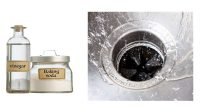Do you have a water heater? When you hear the water heater knocking, you must know how to solve it. Knocking sounds may be annoying for some people because they are noisy. What is the cause of it, and how to solve it? You can find the answer below.
What is the Cause of Knocking Noise of Hot Water Heater?
Having a water heater is so useful. The water heater helps people who like bathing in hot water. A water heater provides hot or warm water for every person who needs it.
So, people don’t need to take difficult steps to take a bath using hot water. But, sometimes water heaters can cause some problems, such as knocking noise.

People who have used a water heater for a long time may face this problem. They usually heard a knocking noise coming from their water heater.
What is the cause of it? Actually, knocking noise can be caused by sediment. The sediment comes from the bottom of the tank, and it finally creates noise when the water heater is turned on.
Many people are confused about how to solve the knocking noise that comes from the water heater. They also don’t know about the cause of it. The sediment that is placed on the bottom part of the tank can be solved by flushing your water heater.
Yes, flushing a tank water heater is a simple method to solve knocking the water heater’s noise. With flushing, you will not hear a knocking noise anymore.
How to Solve Knocking Noise of Water Heater

Read also: Water Heater Expansion Tank Code
As mentioned before, the water heater needs flushing to be in condition. How to do flushing? Here are the steps you can follow:
- Before doing the first step, you can put on heavy-duty gloves to avoid burning yourself. After that, turn off your electric water heater. Turn the cold water shut-off valve. It is also important to avoid cold water from entering the water heater.
- Let the hot water cool down for about 30 minutes. After that, you can connect the drain valve on the bottom part of the water heater with a hose to the drain valve.
- Find another end of the garden hose and place it in the area where water and sediment can safely drain to. To prevent a vacuum from forming in the lines, you have to open a hot water faucet in a tub or sink.
- Find the water heater’s drain valve and open it by turning a small slot on the valve. On the pressure relief valve, pull the tab out. After that, all the water is drained out perfectly.
- Turn on the cold water valve to flush sediment buildup. If you have seen clear water drain out, close the drain valve and let cold water fill the water heater tank.
To prevent further issues, regularly checking and maintaining your water heater is advisable. Mineral deposits can accumulate over time and cause inefficiency or damage. Additionally, ensuring a stable water supply and proper installation can mitigate problems. In some cases, it might be necessary to install a water softener to reduce the hardness of the water, which can also contribute to sediment formation.
Remember, hearing a popping noise from your water heater is a sign that it requires immediate attention. Regular maintenance and timely interventions can prolong the life of your water heater and ensure it operates safely and efficiently.


